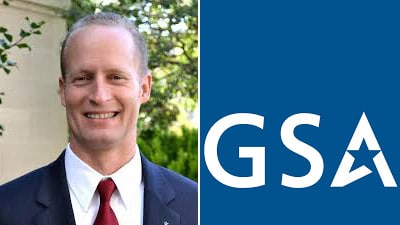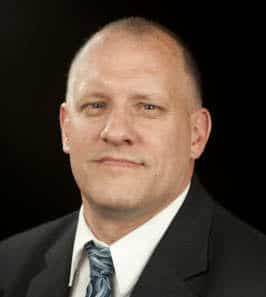
OMB’s Morrison, DHS’s Maughan heading to new roles in government
FEMA’s Adrian Gardner retires after 30 years and GSA’s Dan Twomey is leaving next week after spending the last four years in government as an industry expert.
Most people have said working at the Office of Management and Budget (OMB) has been one of the best experiences of their lives.
But that experience can come at a price. So it’s no surprise that after more than three years of a daily grind that some say can easily be 12 hours a day and six days a week, staff members say it’s time to move on.
That likely is the case for Kelly Morrison, a performance analyst in OMB’s Federal Chief Information Officer’s office.
Sources confirmed that Morrison is joining the U.S. Agency for International Development’s CIO’s office in late April.

Morrison joined OMB in 2015 from the Interior Department.
During her time at OMB, Morrison became best known for her work on implementing Technology Business Modernization (TBM) standards across government as part of modernizing the IT Capital Planning and Investment Control (CPIC) process.
The administration set a goal of full-scale TBM standards implementations by 2022.
Last May, Morrison said at an AFFIRM event that the goal is for TBM is to move the planning process from a static effort to a value-added dynamic one that cuts across the entire agency.
“TBM is a family sport,” Morrison said. “It’s not an IT initiative. It’s also not strictly a finance initiative or acquisition initiative or a human capital initiative, but it’s really bringing the whole family together and not just at one part of the organization, but all parts.”
The Trump administration has made TBM implementation a part of its cross-agency President’s Management Agenda goals. In the December 2018 update, the administration said as of fiscal 2017 agencies categorized 84 percent of all federal IT spending as “uncategorized,” meaning the money was just lumped into broad areas, instead of specific ones.
In President Donald Trump’s fiscal 2020 budget request, the General Services Administration requested $25.9 million to support several initiatives, including establishing a new project management office for the governmentwide implementation of TBM principles.
The implementation of TBM standards have been slower than expected and in some ways much more difficult because of a lack of resources to do that analysis.
The CIO Council is trying to relieve some of those pain points by releasing a TBM implementation playbook, based in part of the experiences at GSA and the Education Department.
Beyond TBM, Morrison also worked on several other initiatives including the implementation of PortfolioStat, TechStat and CyberStat — all of which monitors spending performance and helping ensure that it is aligned with administration priorities.
Sources say Morrison’s new role at USAID will be helping the CIO’s office coordinate technology across the agency’s development assistance efforts.
It’s unclear who will replace her at OMB.
Over at the Homeland Security Department, two long-time executives are moving on.
Doug Maughan, a division director who worked on cybersecurity at the Science and Technology Directorate, is leaving after 15 years.
Maughan announced on LinkedIn he is joining the National Science Foundation to be the head of its Convergence Accelerator.

NSF says “the Convergence Accelerator effort is a new capability within NSF to accelerate use-inspired, convergence research in areas of national importance via partnerships between academic and non-academic stakeholders. The C-Accel effort provides a home for this research and advances ideas from concept to deliverables.”
Maughan’s decision to move on isn’t all that surprising as I’ve heard recently that a S&T reorg moved him out of the cyber division. The recent S&T Cyber Innovation Showcase was his last hurrah, so to speak, in overseeing a successful program for more than eight years.
He came to DHS S&T in 2003 to be a program manager after spending four years at the Defense Advanced Research Projects Agency and 11 years as a computer scientist at the National Security Agency.
In addition to Maughan, long-time federal executive Adrian Gardner announced his retirement after 30 years.
Gardner, who most recently was the executive director for Recovery Communications and Technology in the Office of Response and Recovery at the Federal Emergency Management Agency, served in several CIO positions during his career.
Gardner is heading to a yet unannounced new role in the private sector.
During his career, Gardner was CIO at FEMA, NASA Goddard Space Center and the National Weather Service, worked at the Energy Department and served eight years in the Air Force.
Finally, congratulations to Dan Twomey, who spent most of his career in the private sector working as a government contractor, and is retiring on April 18 after a four-year stint in the government.
Twomey spent the last part of his career working in GSA as an industry expert on the category management data center consolidation initiative.
Twomey tells me he’s really retiring this time, or at least for the short term.
No matter, he should get a lot of credit for going in the opposite direction of many executives who spend their career in government and then go to the private sector. Twomey was one of the few industry executives who took on a civil servant position after a career working at places like Unisys, GigaTrust and Robbins-Gioa.
Copyright © 2025 Federal News Network. All rights reserved. This website is not intended for users located within the European Economic Area.
Jason Miller is executive editor of Federal News Network and directs news coverage on the people, policy and programs of the federal government.
Follow @jmillerWFED
Related Stories






